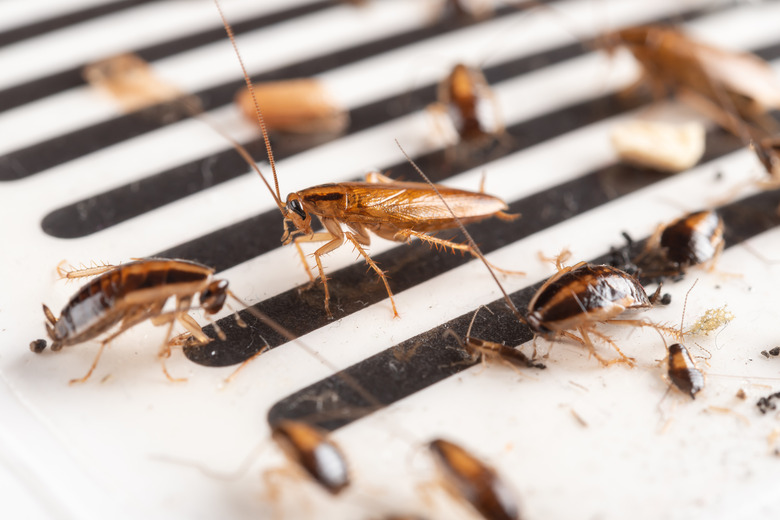6 Creatures That Could Survive An Apocalypse
With all the concern about COVID-19, a lot of people have been thinking about what would happen in an even worse pandemic situation.
So ... what creatures would survive a world apocalypse? What organisms might be able to survive a worldwide nuclear war, pandemic or another world disaster?
Here are six creatures with the best chance of being OK.
1. Cockroaches
1. Cockroaches
Cockroaches are the classic apocalypse survivor. With over 4,000 species, these resilient little insects can survive high levels of radiation and are rapidly becoming resistant to most insecticides.
A study from Purdue University showed that when cockroaches are exposed to insecticides and toxin, they rapidly evolve resistance to those toxins (not unlike bacteria). Not only that, but they also pick up resistance to other insecticides along the way.
Besides their resistance to toxins that can harm humans, cockroaches can also eat and survive on almost anything. Even without access to their typical diet, they would be able to find sustenance in basically anything.
Also, another scary fact: A single female cockroach can give birth to 200 to 300 offspring in her 1-2 year lifespan.
2. Mummichog
2. Mummichog
The mummichog, also called the killifish or mud minnow, has evolved to survive in extremely polluted water. Not only can they survive in water that's 8,000 times above the lethal dose of pollution and toxins for them in normal circumstances, but they're "thriving" in that water, as scientists in the study reported.
The study found that these fish quickly evolved genetic mutations that allowed them to either deactivate or turn off chemical pathways that would normally cause damage from pollutants. Similar to the cockroaches, they can rapidly evolve to survive dire circumstances.
If these little fish can evolve to survive in these horribly polluted environments, it's very likely that they'll be able to survive an apocalyptic world.
3. Tardigrade
3. Tardigrade
Tardigrades, also known as "water bears," are one of the most resilient creatures on the planet. These microscopic animals can survive pretty much anything that an apocalypse would throw at them.
They can survive over 1,000 times the levels of radiation that a human can. They can survive 1,200 times above normal atmospheric pressure. They can survive 10 years without water. They can survive within a huge range of temperature: from absolute 0 (aka -460 degrees Fahrenheit) to over 300 degrees Fahrenheit.
They can also live almost anywhere. Bottom of the ocean? Fine. A small puddle? Yep! In a small patch of moss? Of course. In a space vacuum? No problem.
Scientists also say these little water bears could even survive a supernova and large asteroid impacts.
4. The Devil Worm
4. The Devil Worm
With a name like this, it's scary to think that it could survive almost anything.
The Devil Worm is a species of nematode that's known for its terrifying appearance under a microscope and for its ability to survive extreme pressure and temperatures – and no oxygen.
This creature was only discovered in 2011, and it was found existing 2.2 miles beneath the Earth's surface. It lives in complete darkness under extreme pressure, eating only small bacteria. It's currently the deepest living animal in the Earth's surface.
If the world was ending, it's doubtful that these worms would even know something was happening, much less be affected by the world disaster.
5. Ants
5. Ants
There are over 12,000 species of ants all over the world, in a range of environments and temperatures. This bodes well for their survival since there are so many organisms able to survive in a variety of different temperatures, pressures, weather events and more.
They also have evolved a unique ability to target diseased members of their colony. One study revealed that ants will "sacrifice" or kill members of their ant colony that they sense are diseased or infected. This helps stop the spread of disease throughout their colony, which can help them survive pandemics and serious illnesses.
6. E. Coli
6. E. Coli
So far, all of the organisms on this list have been animals. However, some of the organisms that are likely to survive world pandemics or disasters are microbes like bacteria and single-celled organisms.
E. Coli in particular is a hearty microbe. This is the bacteria that causes gastrointestinal upset and lives in the intestines of humans and other animals.
Besides finding a place to exist inside living and dead organisms, E. Coli can survive six times the radiation that humans can, which bodes well for this part of our gut microbiome. They can also build this resistance extremely quickly, meaning they would likely survive even a very sudden disaster.
References
- Earth Sky: Could cockroaches survive a nuclear apocalypse?
- CNN: Cockroaches are becoming immune to insecticides. Have a great day.
- National Geographic: These Fish Evolved to Live in Extremely Toxic Water
- Britannica: Absolute Zero
- Live Science: Facts About Tardigrades
- National Geographic: New "Devil Worm" Is Deepest-Living Animal
- Phys Org: Ants sacrifice their colony mates as parts of a deadly disinfection
- Pest World for Kids: Ant Facts for Kids
- Food Safety News: Study: E. Coli Bacteria Can Build Resistance Quickly, Even To Ionizing Radiation
Cite This Article
MLA
Walsh, Elliot. "6 Creatures That Could Survive An Apocalypse" sciencing.com, https://www.sciencing.com/creatures-that-would-survive-an-apocalypse-13725305/. 18 March 2020.
APA
Walsh, Elliot. (2020, March 18). 6 Creatures That Could Survive An Apocalypse. sciencing.com. Retrieved from https://www.sciencing.com/creatures-that-would-survive-an-apocalypse-13725305/
Chicago
Walsh, Elliot. 6 Creatures That Could Survive An Apocalypse last modified March 24, 2022. https://www.sciencing.com/creatures-that-would-survive-an-apocalypse-13725305/
